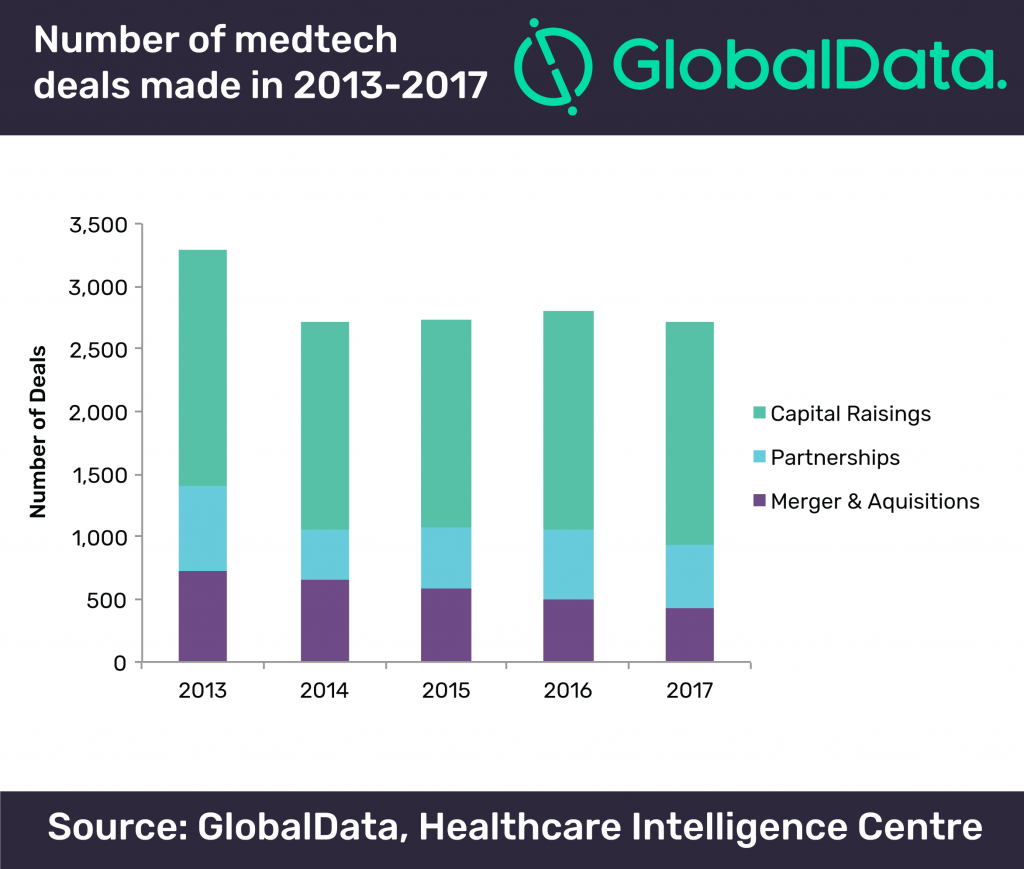Following a boom in large medtech mergers over the past few years, the landscape for medical device deals has remained steady in 2017, largely due to regulatory and reimbursement issues, according to GlobalData, a leading data and analytics company.
While the total number of medtech deals in 2017 to date remains stagnant, with approximately 2,700 deals each year for the past four years, this year has seen a slight rise in capital raisings, yet the number of mergers and acquisitions continues to decline.
Jennifer Ryan, Healthcare Analyst at GlobalData, commented: “A number of factors are contributing to the stagnant investment scene in medtech. Regulatory approvals are becoming more time-consuming and challenging to acquire, particularly through the FDA, the gatekeeper to the world’s largest medical device market.
“However, even a product’s market approval is no longer evidence that it will be successful. As the world’s population ages and requires more involved care, the reimbursement scene is becoming increasingly important.
”Additionally, favorable reimbursement is becoming more difficult to obtain. A growing focus on long-term patient outcomes and healthcare expenditure means devices must also now demonstrate that they will benefit value-based healthcare initiatives on top of the traditional safety and efficacy requirements.”
Despite the small uptick in capital raisings, including equity and debt offerings, private equity, and venture financing, medtech continues to struggle with investment and venture capital.
Many larger companies are resorting to strategic acquisitions of smaller market players who have managed to grow their technologies to a stage with positive market potential, rather than simply market approval.
Ryan adds: “Moving into 2018, players focused on innovating with digital medical devices are more likely to secure investments or be acquired more quickly than those focused on traditional devices, as physicians and patients alike continue to call for modern technologies.”

